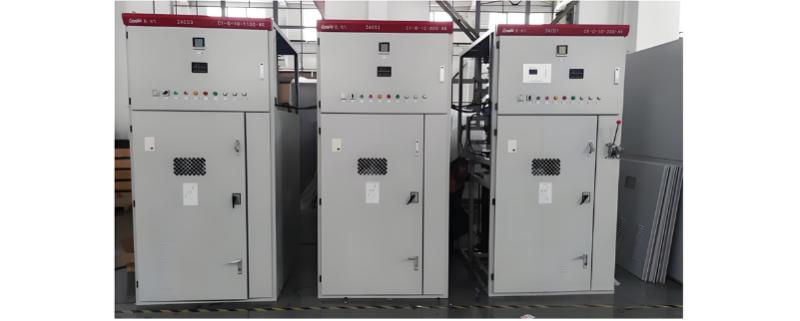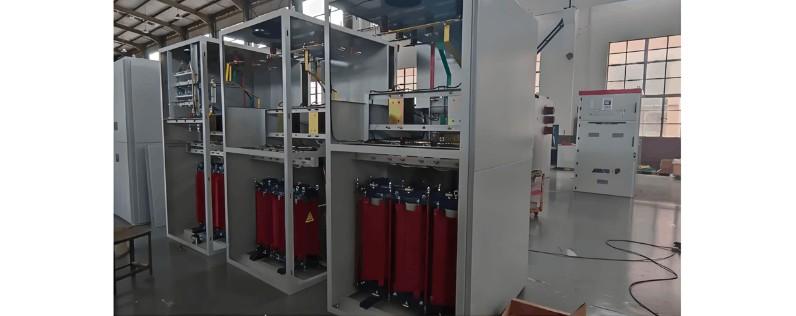Ang 10kV high-voltage reactive power compensation device ay isang mahalagang at hindi maaaring iwanang komponente sa modernong mga sistema ng kuryente. Sa pamamagitan ng pagbibigay o pag-absorb ng reactive power, ito ay epektibong nag-aaddress ng mga isyu tulad ng mababang power factor, mataas na line losses, at pagbabago ng voltage na dulot ng demand ng reactive power, na gumaganap ng pangunahing papel sa pagpapabuti ng ekonomiya, seguridad, at kalidad ng kuryente ng grid operation. Ang high-voltage 10kV reactive power compensation ay isang kritikal na aparato para masigurado ang ligtas at ekonomikong operasyon ng grid.
Ang pag-unawa sa kanyang working principle ay ang pundasyon para sa maintenance, habang ang mahigpit na pag-implementa ng regular na plano ng maintenance na nakatuon sa preventive testing at condition monitoring—na palaging inuuna ang seguridad—ay ang pundamental na guarantee para masigurado ang matagal na reliable operation. Ang gawain ng maintenance ay dapat maisagawa ng mga qualified at may karanasan na personal ayon sa naitatag na proseso. Ang sumusunod ay isang detalyadong paliwanag tungkol sa working principle at mga mahahalagang bagay sa maintenance ng 10kV high-voltage reactive power compensation systems.
1. Working Principle ng 10kV High-Voltage Reactive Power Compensation
Core Objective: Ipaglaban ang power factor ng grid, bawasan ang line losses, istabilisahan ang system voltage, at pagpataas ng kalidad ng supply ng kuryente.
1.1 Compensation Principle
Source of Reactive Power: Inductive loads sa power grid (halimbawa, motors, transformers) nangangailangan ng pag-establish ng magnetic field sa panahon ng operasyon, na nakokonsumo ng lagging reactive power (Q).
Compensation Method: Nakakonekta ang capacitor banks sa parallel, na lumilikha ng leading capacitive reactive power (Qc) upang ibalot ang inductive reactive power (Ql).
Result: Ang kabuuang reactive power (Q) na kinakailangan ng sistema ay nabawasan, ang power factor (Cosφ = P / S) ay ipinapabuti, at ang apparent power (S) ay binababa.
1.2 Components ng Compensation Device
High-Voltage Shunt Capacitor Bank: Ang core component na nagbibigay ng capacitive reactive power. Karaniwang binubuo ng maraming capacitor units na nakakonekta sa series at parallel upang tugunan ang 10kV voltage at kinakailangang kapasidad.
Series Reactor:
Current-Limiting Reactor: Limita ang inrush current sa sandaling kapag pinapalit ang capacitor (karaniwang 5–20 beses ang rated current), na nagprotekta sa capacitors at switching equipment.
Filter Reactor: Nagbubuo ng LC tuned circuit kasama ang capacitor (karaniwang tuned sa ilalim ng ika-5, ika-7, o tiyak na harmonic frequency), na nagpapababa ng harmonic currents na pumapasok sa capacitor, na nagpipigil ng harmonic amplification at resonance, kaya nagprotekta sa capacitor.
High-Voltage Switching Equipment:
Vacuum Contactor o Vacuum Circuit Breaker: Ginagamit para switch-in o switch-out ang capacitor banks. Ang vacuum contactors ay mas karaniwan at angkop para sa madalas na operasyon.
Isolating Switch / Grounding Switch: Ginagamit sa panahon ng maintenance upang i-isolate ang source ng kuryente at siguruhin ang maasintas na grounding para sa seguridad.
Discharge Device:
Discharge Coil o Discharge Resistor: Pagkatapos maputol ang capacitor bank, ito ay mabilis na dinidischarge ang nakaimbak na charge sa capacitor terminals (karaniwang kinakailangan na mabawasan ang residual voltage sa ilalim ng 50V sa loob ng 5 segundo), na nagpapatunay ng seguridad sa panahon ng maintenance. Ang discharge coils ay mas karaniwan.
Protection Devices:
Fuse: Nagprotekta sa individual capacitors laban sa internal faults (expulsion-type fuse).
Relay Protection: Kasama ang overcurrent protection (phase-to-phase short circuit), unbalance protection (internal capacitor element breakdown o fuse blowout), overvoltage protection, undervoltage protection, harmonic overlimit protection, open-delta voltage protection, atbp.
Measurement and Control Devices:
Controller: Patuloy na nagsusuri ng system voltage, current, power factor, harmonic current, harmonic voltage distortion rate, at iba pang parametres. Automatic na kontrol ang switching ng capacitor banks ayon sa preset strategies (halimbawa, target power factor, target voltage, harmonic over-limit protection, time-based programs).
Current Transformer (CT), Voltage Transformer (PT): Nagbibigay ng signals para sa measurement at protection.

1.3 Operational Process
Monitoring: Patuloy na nagsusuri ang controller ng mga parametres tulad ng power factor, voltage, at demand ng reactive power ng grid.
Decision: Kapag ang power factor ay bumaba sa set lower limit (halimbawa, 0.9 lagging), o kapag ang sistema ay nangangailangan ng dagdag na reactive power, ang controller ay nagbibigay ng energizing command.
Energizing: Ang control circuit ay nagpapatakbo ng vacuum contactor upang isara, na konektado ang capacitor bank (karaniwang sa pamamagitan ng series reactor) sa parallel sa 10kV busbar.
Compensation: Ang capacitor bank ay nagbibigay ng capacitive reactive power sa sistema, na ibinalot ang bahagi ng inductive reactive power, na ipinapabuti ang power factor, at suportado ang voltage.
De-energizing: Kapag ang power factor ay lumampas sa set upper limit (halimbawa, 0.98 leading, na maaaring magdulot ng overcompensation), o kapag ang system voltage ay masyadong mataas, o kapag ang load reduction ay nagresulta sa pagbaba ng demand ng reactive power, ang controller ay nagbibigay ng de-energizing command, ang vacuum contactor ay binubuksan, at ang capacitor bank ay inalis sa serbisyo.
Discharge: Pagkatapos maputol ang capacitor bank, ang discharge device (discharge coil) ay automatic na nag-ooperate, na mabilis na dinidischarge ang nakaimbak na energy.
2. Maintenance ng 10kV High-Voltage Reactive Power Compensation Devices
Core Objective: Masigurado ang ligtas, maasintas, at epektibong operasyon, at pagpapahaba ng buhay ng equipment.
2.1 Daily Inspection
Visual Inspection: I-check ang capacitor casing para sa bulging, oil leakage, rust, o paint peeling; i-check ang bushings para sa cracks, contamination, o flashover traces; i-check ang connection points para sa looseness, overheating (infrared thermography), o discoloration.
Operating Sound: I-listen para sa abnormal vibration o noise mula sa reactors, discharge coils, o capacitors (halimbawa, ang abnormally increased "humming" sound ay maaaring indikasyon ng internal looseness).
Instrument Indication: I-check kung ang indications ng voltmeters, ammeters, power factor meters, at reactive power meters ay normal, at ikumpara sa display values ng controller.
Environmental Check: I-check ang indoor ventilation, ambient temperature, at humidity upang masigurado na sila ay nasa allowable limits; i-check para sa dust accumulation o signs ng small animal intrusion; i-check kung ang fences at labels ay intact.
Protection Signals: I-check kung may alarm o trip signals mula sa protection devices.
2.2 Periodic Maintenance (Karaniwang Bawat Anim na Buwan hanggang Isang Taon)
Power-Down Cleaning: Thoroughly alisin ang dust at dirt mula sa surfaces ng capacitor casings, bushings, insulators, busbars, frames, reactors, at switchgear (gamit ang dry, lint-free cloths o special tools, na iniiwasan ang insulation damage). (Mahalaga! Ang paglilinis ng high-voltage equipment ay dapat gawin pagkatapos ng power-off, voltage testing, at grounding!)
Tightening Connections: I-check at i-tighten ang lahat ng electrical connection bolts (busbar connections, capacitor terminal connections, grounding wires, atbp.) upang masigurado ang maayos na contact at iwasan ang overheating. Operate ayon sa specified torque.
Capacitor Testing:
Capacitance Measurement: Gamitin ang dedicated capacitance bridge upang sukatin ang total capacitance ng bawat phase o bawat branch (kung applicable), at ikumpara sa nameplate values o historical data. Kung ang deviation ay lumampas sa ±5% o nagpakita ng significant change (lalo na decrease), ito ay nangangailangan ng close attention, posibleng nagpapahiwatig ng internal component damage. Ang capacitance value ng single capacitor ay hindi dapat lumampas sa -5% to +10% ng rated value.
Insulation Resistance Test: Sukatin ang insulation resistance sa pagitan ng poles at sa pagitan ng pole at case (gamit ang 2500V megohmmeter), na dapat tugunan ang regulatory requirements (karaniwan, inter-pole insulation resistance ay dapat napakataas, pole-to-case insulation resistance > 1000MΩ). Dapat fully discharged bago at pagkatapos ng testing!
Dissipation Factor (tanδ) Measurement: Maaaring gawin kung ang kondisyon ay pinahihintulutan, na mas sensitibo sa pag-reflect ng internal capacitor insulation moisture o deterioration. Hindi dapat lumampas ng significant increase kumpara sa factory o previous measurement values.
Reactor Inspection:
I-check ang coil appearance para sa overheating, discoloration, insulation aging, o damage.
I-check kung ang core (kung present) fasteners ay loose.
Sukatin ang winding DC resistance, na hindi dapat lumampas ng significant difference kumpara sa factory o previous values (considering temperature influence).
Sukatin ang insulation resistance.
Discharge Device Check:
I-check ang discharge coil appearance at wiring.
I-verify ang discharge performance (under safety regulation permission, simulate operation upang i-verify ang residual voltage drop speed).
Switching Equipment Maintenance:
I-check ang vacuum interrupter appearance.
I-check kung ang operating mechanism ay gumagana nang flexible at reliable; i-apply ang appropriate lubricant sa lubrication points.
Sukatin ang main circuit contact resistance.
Gawin ang mechanical characteristic tests (opening/closing time, synchronism, bounce, stroke, atbp.).
Protection Device Calibration: Calibrate settings at gawin ang transmission tests para sa overcurrent, unbalance, overvoltage, undervoltage, atbp., ayon sa regulations upang masigurado ang accurate at reliable operation. I-check ang fuse appearance at indicator status.
Controller Check: I-check kung ang display, buttons, at communication ay normal; i-verify ang sampling accuracy (ikumpara ang voltage, current, power factor, atbp., sa standard meter); i-check kung ang switching logic ay tama.

2.3 Special Maintenance
Harmonic Environment: Kung ang sistema ay may serious harmonics, palakasin ang monitoring ng temperature rise ng capacitors at reactors (infrared thermography), gawin ang regular na harmonic tests, masigurado ang reasonable tuning point settings upang iwasan ang resonance. Magdagdag ng filtering devices kung kinakailangan.
Frequent Switching: Palakasin ang inspection ng contact wear ng vacuum contactors/circuit breakers, shorten ang kanilang maintenance cycle.
After Faults: Pagkatapos ng protection operation (lalo na fuse blowout o unbalance protection operation), ang dahilan ay dapat lubusang mailarawan, palitan ang damaged components, at taposin ang comprehensive inspection at testing bago ire-energize.
2.4 Safety Precautions (Pinakamahalaga!)
Mahigpit na ipatupad ang "Two Tickets and Three Systems": Work Ticket, Operation Ticket; Shift Handover System, Patrol Inspection System, Equipment Periodic Testing and Rotation System.
Power-Off, Voltage Test, Grounding: Bago anumang maintenance work, ang source ng kuryente ay dapat maasintas na disconnected (kasama ang possible back-feeding mula sa PT secondary side), gamitin ang qualified voltage tester upang ikumpirma ang absence ng voltage, at i-install ang grounding wires sa parehong dulo ng work location. Ang capacitor bank ay dapat fully discharged gamit ang dedicated grounding rod at grounded bago makontakin!
Dedicated Supervisor: Operation at maintenance ng high-voltage equipment ay dapat may dedicated supervisor.
Use Qualified Tools and Protection: Gamitin ang tools na may qualified insulation rating, mag-suot ng insulating gloves, insulating boots, at iba pang safety protective equipment.
Residual Voltage Awareness: Kahit pagkatapos ng discharge, gamitin ang grounding rod upang i-short-circuit ang capacitor terminals muli bago makontakin.
2.5 Record Keeping and Analysis
I-record ang data mula sa bawat inspection, maintenance, at test nang detalyado (capacitance value, insulation resistance, temperature, protection action information, atbp.).
Itatag ang equipment files, gawin ang trend analysis, at agad na mailarawan ang potential defects.
I-record ang abnormal conditions at handling processes.
3. Reference for Key Maintenance Intervals
Daily Inspection: Daily o weekly (depende sa importance at operating environment).
Periodic Cleaning and Inspection (without power-off): Monthly o quarterly.
Periodic Maintenance (with power-off): Once to twice a year (combined with preventive testing).
Capacitor Capacitance/Insulation Resistance Measurement: Conducted during power-off maintenance; once within one year of commissioning, then once every 1–2 years.
Protection Device Calibration: Once a year.
Switching Equipment Characteristic Test: Combined with power-off maintenance, once every 1–2 years or when operation count reaches a certain value.
4. Notes
Ambient Temperature: Ang operating ambient temperature ng capacitors ay hindi dapat lumampas sa specified upper limit (karaniwan -40°C ~ +45°C), iwasan ang direct sunlight.
Overvoltage: Ang capacitors ay maaaring mag-operate nang matagal sa 1.1 times ang rated voltage; iwasan ang prolonged overvoltage operation.
Overcurrent: Ang capacitors ay maaaring mag-operate nang matagal sa 1.3 times ang rated current (considering harmonic at overvoltage effects).
Harmonics: Ang harmonics ay isa sa pangunahing dahilan ng damage sa capacitors. Ang system harmonic background ay dapat isama sa design, at ang reaktor ratio ay dapat maayos na konfigure. Palakasin ang harmonic monitoring sa panahon ng operasyon.
























